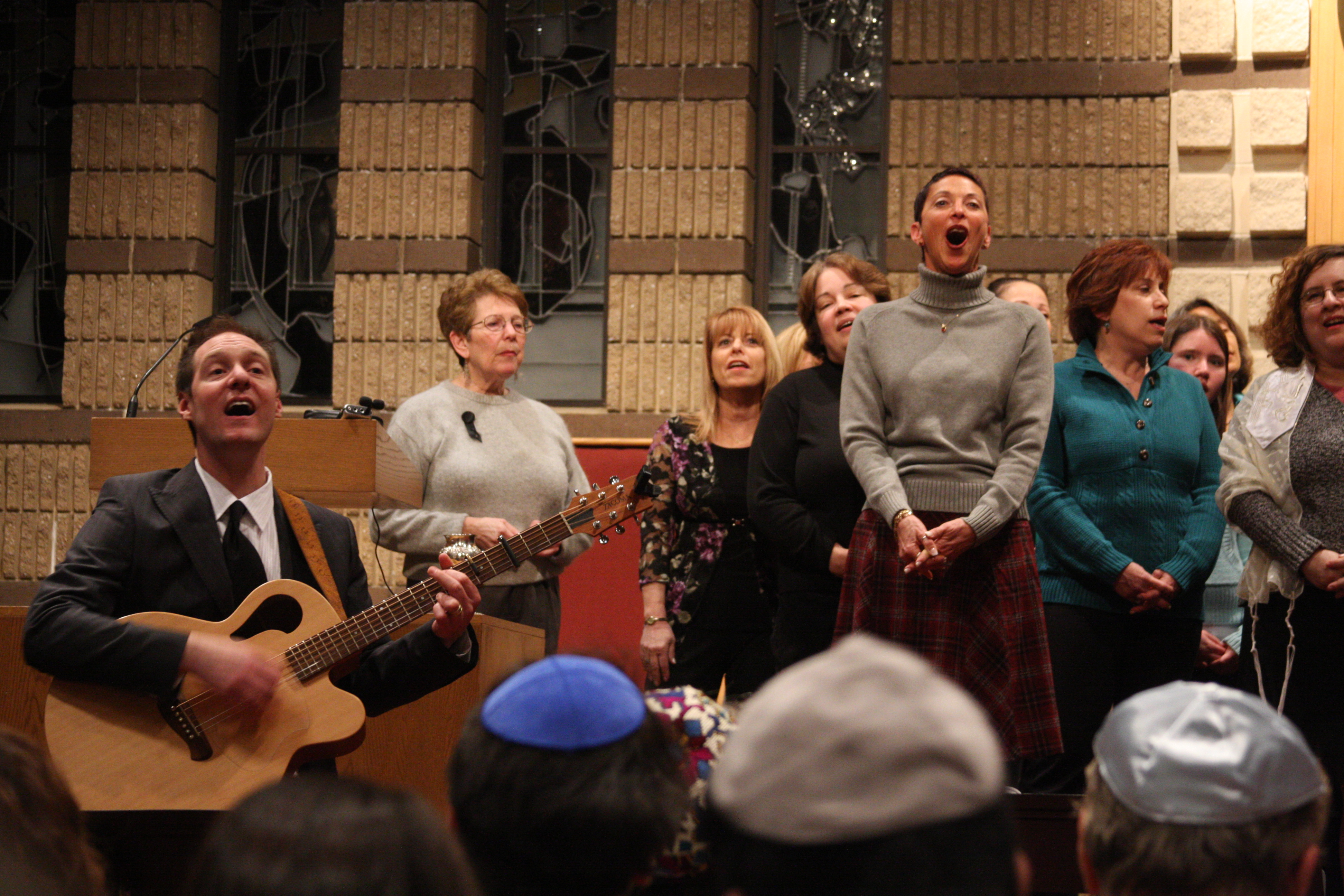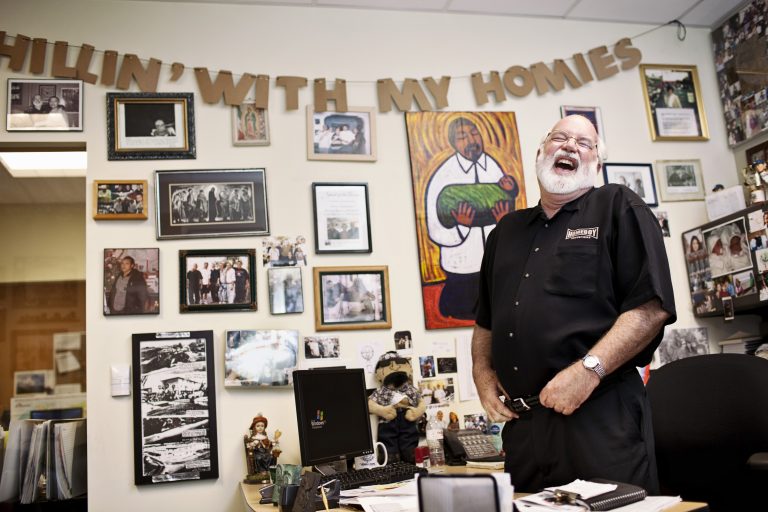
Singing Together Is Sacred
Image by Barnert Temple/Flickr, © All Rights Reserved.
This Saturday, February 11 , many Jews will celebrate Shabbat Shirah, the Sabbath of Singing, which commemorates one of the most vivid musical performances in the Hebrew Bible: the songs sung by Moses and his sister Miriam to celebrate the Israelite crossing of the Sea of Reeds (Red Sea) in their dramatic escape from bondage in Egypt.
This Song of Miriam exemplifies one dominant motivation for sacred music: collective celebration.
“Then Miriam the prophet, Aaron’s sister, took a timbrel in her hand, and all the women followed her, with timbrels and dancing. Miriam sang to them: ‘Sing to the Lord, for he is highly exalted. Both horse and driver he has hurled into the sea.’”
As a cultural historian, I have been studying the relationship between music and religious experience for two decades. Music has been crucial to religious experience across history and region.
Sacred music has a unique ability to engage both body and mind. It brings people together in expressing gratitude, praise, sorrow, and even protest against injustice.
More than three millennia after Miriam, singing continues to be a widely observed expression of thanksgiving and gratitude, whether or not couched in religious language or occurring in a sacred space.
Jews and Christians sing psalms that celebrate the glory of creation and the god who created it; Muslims offer “na’t” in honor of the Prophet Muhammad; and Hindus chant “bhajans” to express their devotion to Shiva or Krishna. In many American evangelical churches, pop-influenced congregational singing, generally referred to as “praise music,” has replaced old-school hymns.
At the other end of the emotional spectrum, sacred music is the preferred medium for expressing mourning and lament. African-American churches commonly referred to such songs of trouble and grief as “sorrow songs,” in contrast to the more upbeat celebratory “jubilee songs.”
Indeed, the climactic final chapter of historian and civil rights activist W.E.B. Du Bois’ classic collection, The Souls of Black Folk, is titled “Of the Sorrow Songs.” He offers an eloquent tribute to the power of the spiritual, when he says,
“And so by fateful chance the Negro folk-song – the rhythmic cry of the slave – stands to-day not simply as the sole American music, but as the most beautiful expression of human experience born this side the seas.”
Many Hebrew psalms are classified as laments and have been sung by monastics and lay worshipers, Jewish and Christian, for 2,000 years. Islam has its own tradition of lamentation dirges, called “nauha,” typically sung by Shiite Muslims in mourning for the martyrs of the Battle of Karbala in 680 A.D., which initiated a bitter succession struggle that still resounds through the Muslim world.
The blues, which have so profoundly shaped American popular music — from jazz and rhythm and blues to soul — are regarded as a secular counterpart to the songs that arose out of conditions of chattel slavery, as the theologian James Cone memorably explores in his seminal study, “The Spirituals and the Blues.”
Just as the experiences of ecstasy and gratitude are heightened by giving vocal expression in collective singing, so the pain of injustice and uncertainty are relieved by vocal release through music.
Former President Barack Obama too broke into what seemed like a spontaneous rendition of “Amazing Grace” at the eulogy he delivered at the historic church in Charleston, South Carolina, following the mass murder of nine church members by a white supremacist in 2015.
Sacred song is one of the most social aspects of religious practice. But it is also an intimate, embodied experience. The singer draws meaning from her or his core being: She feels the sound being produced as she hears it.
Creating musical tone in one’s chest and throat provides sensuous pleasure, amplified by what sociologist Emile Durkheim referred to as “collective effervescence” — the collective energy generated when groups come together in a shared purpose. This concept has been explored extensively by sociologist Randall Collins in his work on interaction ritual chains.
Personally, I have experienced this most intensely while singing shape-note music, which might be described as the heavy metal of American roots music (with a Calvinist twist).
Worth noting in the Miriam singing we began with is the way in which singing and dancing are conjoined.
Disembodied music of the sort we take for granted through MP3s and earbuds, or even sitting passively in a concert hall, is a recent historical development. The most intense experience of unity between body and music is called trance. “[Trancing] is a profound mystery,” writes ethnomusicologist Judith Becker.
“You lose your strong sense of self, you lose the sense of time passing, and may feel transported out of quotidian space.”
Ordinary worshipers often get at least a taste of this when they sing in community. Communal singing plays a role in the release of oxytocin, the “cuddle hormone” instrumental in the pleasures of social bonding.
The Abrahamic faiths that trace their origins to the Hebrew Bible have a long history of linking sacred song to the struggle against injustice and oppression. This tradition comes out of the Hebrew prophets like Isaiah, Jeremiah, Ezekiel, and Amos. Social protest is a strong thread in the psalms, which provided the central worship songs for Jews and Christians.
My most recent book studies just one text, Psalm 137, which includes the famous line,
“How shall we sing the Lord’s song in a strange land?”
This is a psalm that mourns the plight of Judeans held captive in Babylon after the destruction of the Jerusalem Temple in 587 B.C. This has been used as a rallying cry for religious and political movements for many centuries.
And indeed it seems that music may play a part in the mass protests of the Trump era. Secular spirituals like “We Shall Overcome,” with its roots in the black church, are always ready to be dusted off. But this time, Woody Guthrie’s “This Land Is Your Land” has already been promoted by the political resistance as a reminder of the earlier, more inclusive vision of American nationhood. Lady Gaga even managed to take it into her Super Bowl halftime show without raising alarms. New versions of the Song of Miriam continue to be rewritten and sung as songs that celebrate triumph over oppression or injustice.
As Becker says,
“You cannot argue with a song sung in soaring phrases, with drum rhythms you are feeling in your bones, surrounded by friends and family who are all, like you, structurally coupled, rhythmically entrained.”
Editor’s note: the original version of this story inadvertently identified the Battle of Karbala as having taken place in 680 BC instead of 680 AD.
This article was originally published on The Conversation. Read the original article here.

